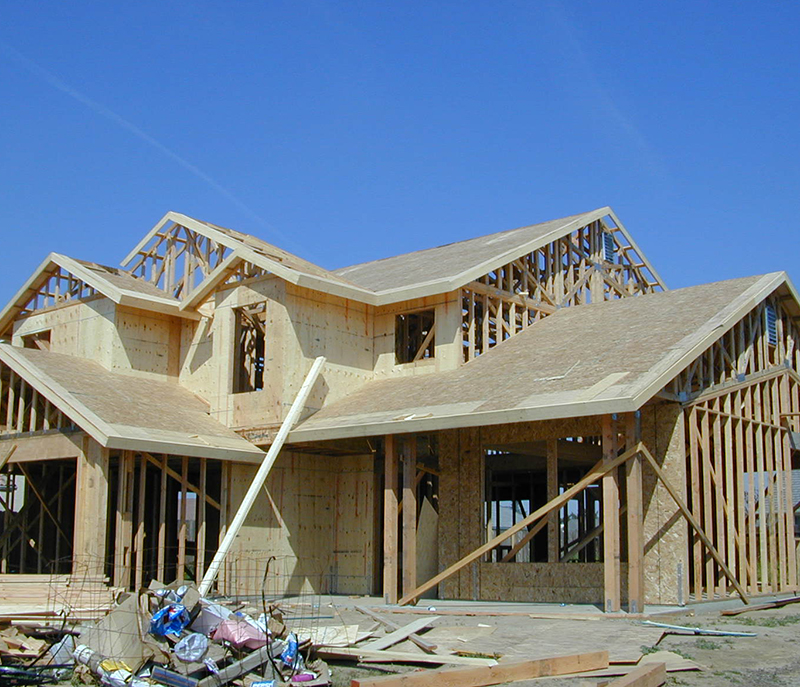In April, the Dallas-Fort Worth metropolitan area permitted more housing than all of California, meaning that on a per-capita basis, DFW permitted five times as much housing as the Golden State. Given that interest rates are the same nationwide, how is one metro area permitting more new housing than the largest state in the nation?
Better urban planning and occupational-licensing policies combined with a lower cost of living – driven by lower housing costs from higher housing production – mean real estate development still pencils out in Dallas despite the return of relatively higher interest rates. With interest rates likely to stay at similar levels for the indefinite future, California should look to Dallas if it hopes to get housing production off the ground in the “new normal.”
First, a brief comparison: DFW, with 8.1-million residents, permitted 7,851 homes in April. California, with 39-million residents, permitted 7,612 homes. With an estimated 20,000-unit home shortage in Dallas compared to a 4.5-million shortage in California, the median house in Dallas goes for $459,000, compared to over $900,000 in California.
Because housing drives household expenditures, labor costs are accordingly much lower in Dallas. A labor-cost advantage means it’s much cheaper for a business to do anything in Dallas, including building houses.
In terms of more specialized housing construction labor, another advantage is that Texas does not require general contractors to have a state license. Dallas does require general contractors to get a local license, but this process is fairly simple, involving a few forms and other limited requirements.
In California, meanwhile, a general contractor must have at least four years of journeyman experience under someone else and pass a three–a-half hour law and business examination. The gargantuan exam includes business organization and licensing, business finances, employment requirements, insurance and liens, contract requirements and execution, public work and safety. In the last month, California has has been losing general contractors despite high demand for contractor services; one 2018 study found Sacramento alone was short approximately 7,000 construction workers.
If California wishes to increase housing production, the state will need to vastly expand its workforce to boost building capacity and reduce labor costs that make projects too expensive to move forward. Reducing unnecessary occupational-licensing requirements would be a key step towards this goal.
Dallas also appears to have taken the exact opposite course of action from California for improving housing availability. Dallas’s 2015 “Neighborhood Plus” housing policy recommended “a holistic approach to neighborhood revitalization and community building that goes beyond production of a limited number of publicly subsidized housing units, to encompass neighborhood quality, safety, mobility and access to education, jobs and health care” with a “a neighborhood by neighborhood approach.”
Dallas’ updated housing plan encourages greater density in lower-rent areas surrounded by higher-rent areas that are at risk of “displacement.” Unlike California, Dallas seeks to maximize housing affordability and prevent “displacement” by building enough market-rate housing in high-demand areas to keep prices down.
On the other hand, California transformed housing development into a Byzantine process with the California Environmental Quality Act (CEQA) in 1970, which allows virtually anyone to challenge projects on environmental grounds. What little housing is built must often be “affordable,” and thus subject to government price controls. Even if a project still makes financial sense after accounting for production delays – during which the developer is paying interest on raised capital – developer profits often may not exceed the high transfer taxes adopted in some localities.
California’s Little Hoover Commission, the state’s official watchdog agency with a high degree of respect across the political spectrum, has recommended reforming CEQA to reduce production delays and exempt infill housing from CEQA review. State legislators would be wise to implement the commission’s proposed changes. These reforms would result in greater predictability and give developers the ability to respond to market demand. It would stimulate the production of more housing, even at current interest rates.
California housing expert Joseph Cohen notes that much of the development in Dallas is on undeveloped land that is faster, easier and cheaper to develop – land that is harder to come by in California’s high-demand coastal areas. Dallas is surrounded by open land, but without effective redevelopment policies it too could one day face some of the same development challenges as California. Dallas’ emphasis on increasing housing production where prices are rising fastest tends to incentivize infill redevelopment of existing buildings. It appears the city has learned California’s lesson.
Relatively higher interest rates are putting downward pressure on development. But the cumulative historic average rate for 30-year mortgages is 7.73%, which is higher than the current 7.03% rate. Developers were able to profitably build at a mass scale for decades before the ultra-low interest rate environment of the 2010s, when cheap capital inflated property values.
Now that normalized interest rates are raising borrowing costs, California faces stagnation and decline as growing expenses push residents out and governments increase taxes to maintain existing service levels from fewer taxpayers.
To become more like Dallas – which even might challenge New York as the nation’s financial capital with a new BlackRock and Citadel-backed stock exchange – California’s state and local leaders need to figure out how to reduce building costs and timelines, and increase the size of the construction workforce to ensure housing production and economic growth can resume.
Kenneth Schrupp is the California reporter for The Center Square. His commentary and analysis have been published by Newsweek and RealClearPolitics.

